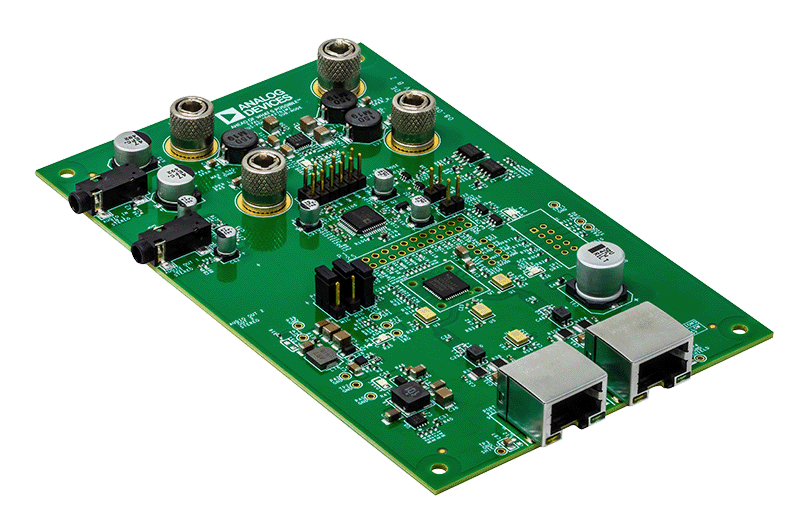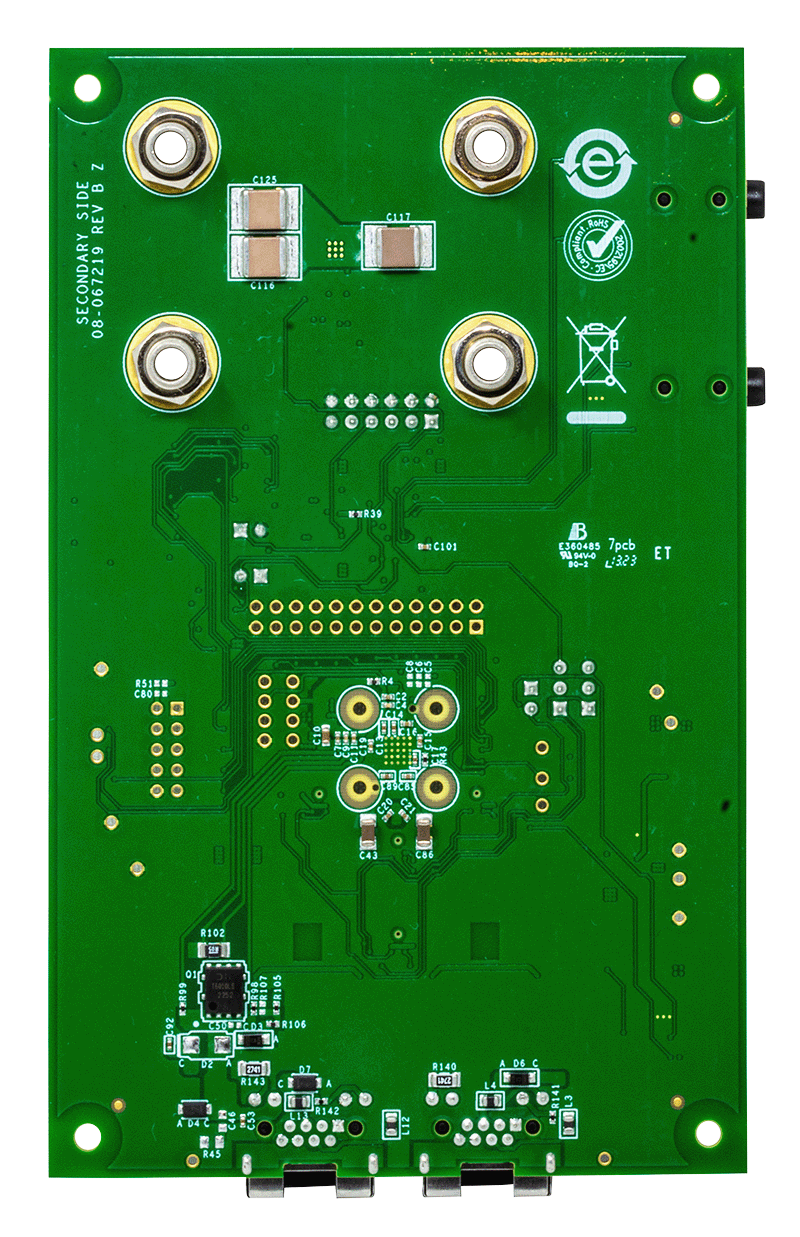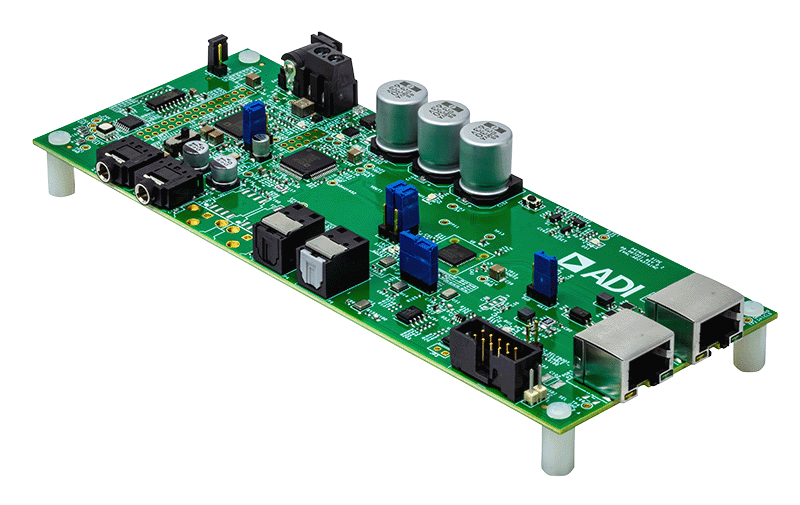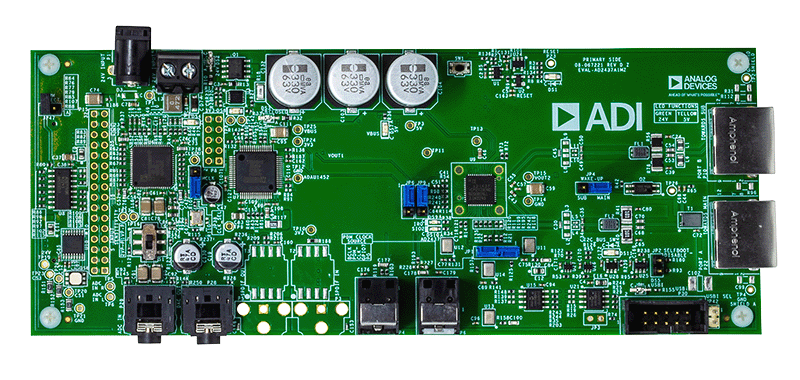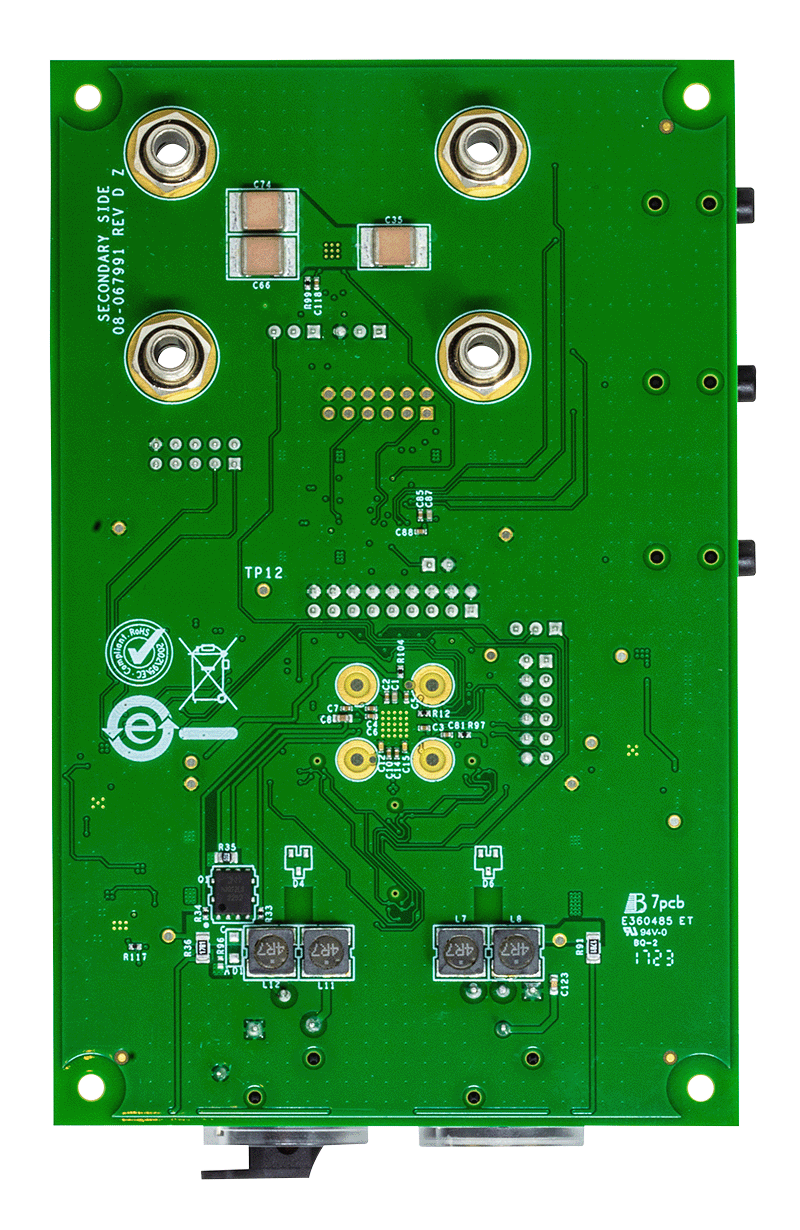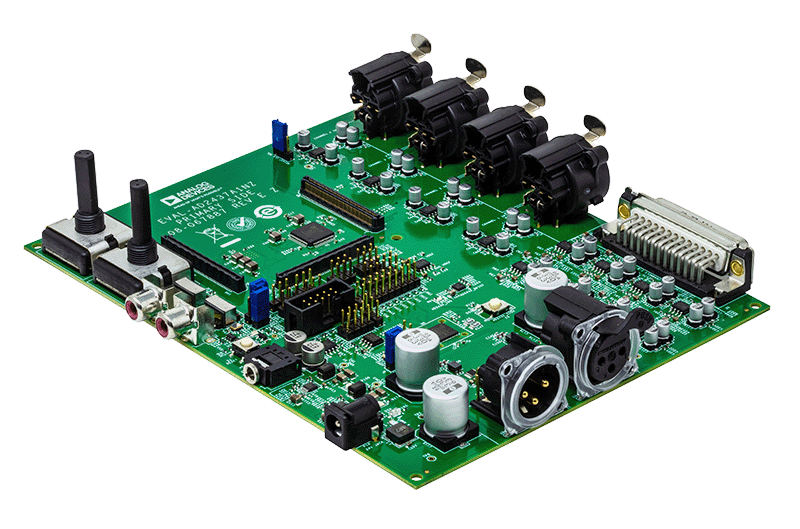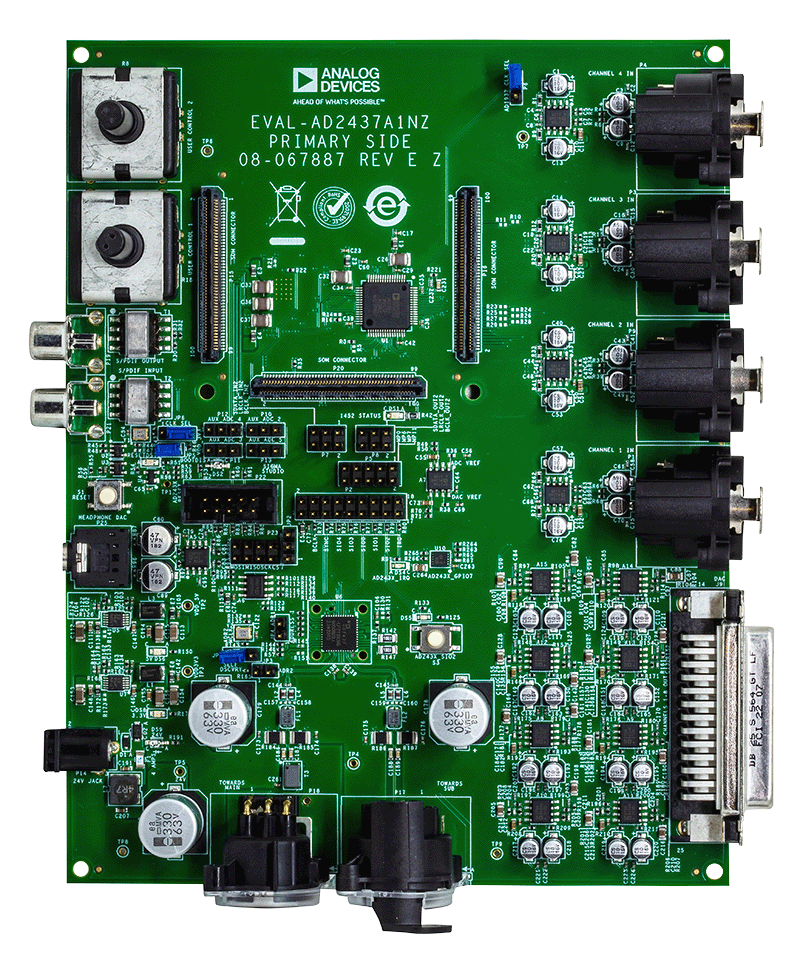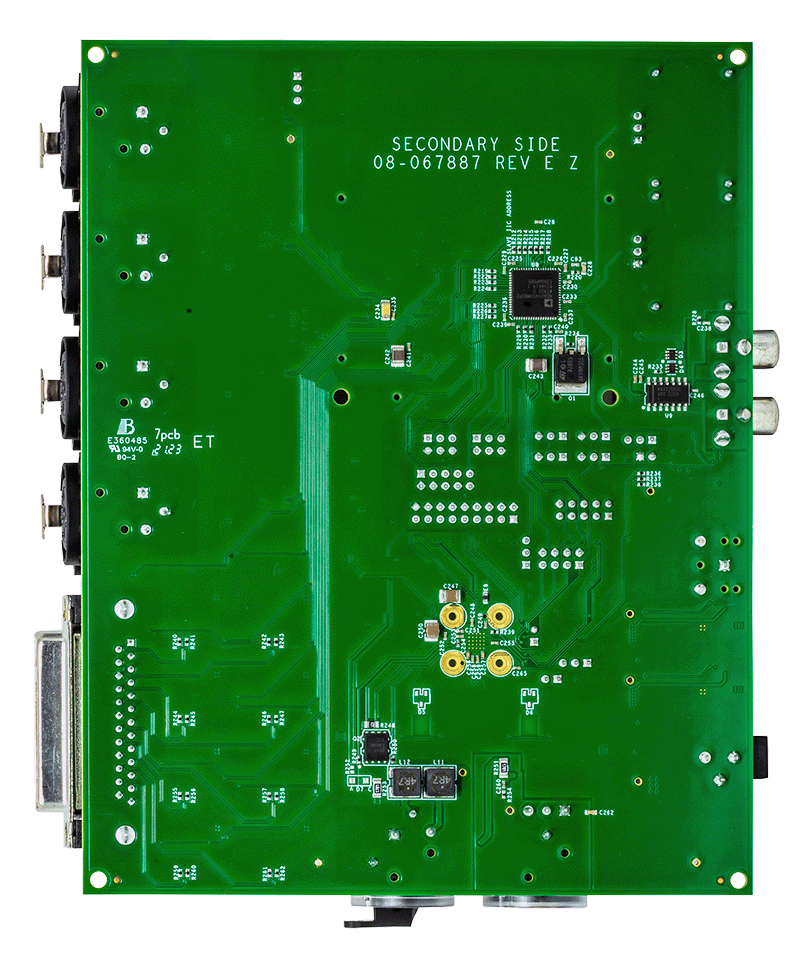AD2437
量产A2B Transceiver Supporting 50W Bus Power and Extended Distance
- 产品模型
- 4
产品详情
A2B BUS FEATURES
- Line topology
- Single main node, up to 16 subordinate nodes
- Up to 30 m between nodes and up to 300 m overall cable length
- Communication over distance
- Synchronous data
- Multichannel I2S/TDM to I2S/TDM
- Clock synchronous, phase aligned in all nodes
- Low latency node to node communication
- Control and status information I2C to I2C
- GPIO over distance
- Synchronous data
- Bus power or local power subordinate nodes
- Configurable with SigmaStudio+ graphical software tool
BASELINE A2B TRANSCEIVER FEATURES
- Configurable as A2B bus main node or subordinate node
- Programmable via I2C and SPI interfaces
- 8-bit to 32-bit multichannel I2S/TDM interface
- I2S/TDM/PDM programmable data rate
- Up to 51 channels of 16-bit data or 32 channels of 24-bit data between nodes
- PDM inputs for up to 4 high dynamic range microphones on main or subordinate nodes
- Support for receiving I2S/TDM and PDM data on the same node
- Unique ID register for each transceiver
- Support for crossover or straight-through cabling
AD2437 TRANSCEIVER ENHANCEMENTS
- Mixed Signal
- ADC monitoring of supply voltages
- Supports 3.3 V input at VIN in Low Voltage Input (LVI) mode
- Digital
- High speed SPI (up to 10 Mbps) over distance
- Dedicated hardware reset pin
- I2S/TDM crossbar switch
- Flexible mapping of Tx/Rx TDM channel data to A2B slot
- Support for I2C fast mode plus (1 MHz)
- Support for LED lighting control using 4 PWM outputs
- 8 GPIO pins with configurable pin mapping
The AD2437 A2B® transceiver provides a multichannel, I2S/TDM link over distances of up to 30 m between nodes. It embeds bidirectional synchronous pulse-code modulation (PCM) data (for example, digital audio), clock, and synchronization signals onto a single-pair differential cable. A2B supports a direct point to point connection and allows multiple, daisy-chained nodes at different locations to contribute and/or consume time division multiplexed channel content.
A2B is a single main node, multiple subordinate node system where the transceiver at the host controller is the main node. The main node generates clock, synchronization, and framing for all subordinate nodes. The main A2B transceiver is programmable over a control port (I2C/SPI) for configuration and read back. An extension of the control port protocol is embedded in the A2B data stream. This allows direct access to registers and status information on subordinate transceivers, as well as I2C to I2C, SPI to I2C, or SPI to SPI communication from the host to a peripheral in a subordinate node. SPI to SPI communication between subordinate nodes can be performed directly and does not need to involve the main node.
The transceiver can connect directly to general-purpose digital signal processors (DSPs), field-programmable gate arrays (FPGAs), application specific integrated circuits (ASICs), digital microphones, analog-to-digital converters (ADCs), digital-to-analog converters (DACs), and codecs through a multichannel I2S/TDM interface. It also provides a pulse density modulation (PDM) interface for direct connection of up to four PDM digital microphones.
The transceiver supports a bus power feature, where the main node supplies voltage and current to the subordinate nodes over the same daisy-chained, single-pair wire or XLR/DMX cable as used for the communication link.
The transceiver also supports a broad spectrum of Ethernet cables in which the A2B occupies only one pair of a category (CAT) cable. This frees up the remaining CAT cable pairs for power delivery.
APPLICATIONS
- Conference room transducer nodes
- Musical instrument connectivity
- Distributed audio systems
- Personal audio zones
参考资料
数据手册 1
用户手册 5
应用笔记 1
集成电路异常 1
视频 5
模拟对话 1
ADI 始终高度重视提供符合最高质量和可靠性水平的产品。我们通过将质量和可靠性检查纳入产品和工艺设计的各个范围以及制造过程来实现这一目标。出货产品的“零缺陷”始终是我们的目标。查看我们的质量和可靠性计划和认证以了解更多信息。
| 产品型号 | 引脚/封装图-中文版 | 文档 | CAD 符号,脚注和 3D模型 |
|---|---|---|---|
| AD2437BCPZY | LFCSP:LEADFRM CHIP SCALE | ||
| AD2437BCPZY-RL | LFCSP:LEADFRM CHIP SCALE | ||
| AD2437KCPZY | 48-Lead LFCSP (7mm x 7mm x 0.75mm) | ||
| AD2437KCPZY-RL | 48-Lead LFCSP (7mm x 7mm x 0.75mm) |
这是最新版本的数据手册
软件资源
评估套件
最新评论
需要发起讨论吗? 没有关于 AD2437的相关讨论?是否需要发起讨论?
在EngineerZone®上发起讨论





